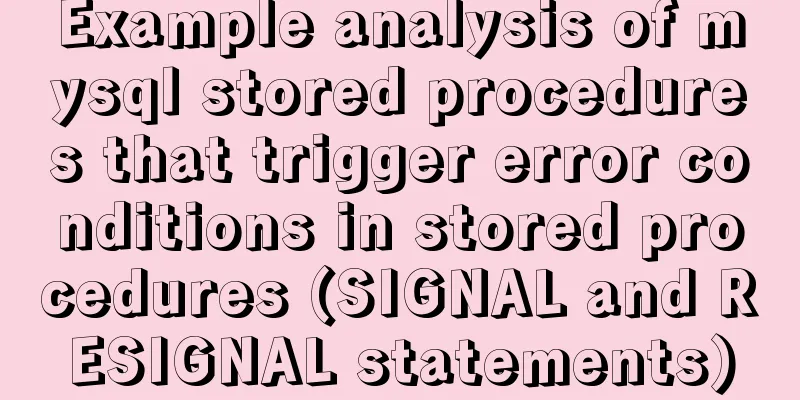Mysql example of splitting into multiple rows and columns by specific symbols

|
Some fault code tables use the following design pattern for historical or performance reasons. That is, multiple attribute values are stored in the same row or column. As shown in the tonly_error_record in the following table:
In this case, you can consider splitting the column by semicolon ";" to form multiple rows, and then splitting it by comma "," to form multiple columns. As shown in the following table:
This can be achieved using the string splitting function in MySQL. The function description is as follows: SUBSTRING_INDEX(str,delim,count) -- str: the string to be split; delim: the delimiter; count: the number of times the delimiter appears Finally, the specific implementation is as follows:
#Step 1: Split into multiple rows based on semicolon ";" #Step 2: Split into multiple columns based on comma "," select distinct S1.tbox_vin,
(select substring_index(substring_index(S1.error_code, ',', 1), ',', -1)) as spn,
(select substring_index(substring_index(S1.error_code, ',', 2), ',', -1)) fmi,
S1.modify_time
from (
select t1.tbox_vin,
substring_index(substring_index(t1.dm1_string, ';', t2.help_topic_id + 1), ';', -1) as error_code,
t1.modify_time
from tonly_error_record t1
join mysql.help_topic t2
on t2.help_topic_id < (length(t1.dm1_string) - length(replace(t1.dm1_string, ';', '')) + 1)
where t1.dm1_string is not null
and t1.dm1_string != '') S1
where s1.error_code != ''
and s1.error_code is not null
order by S1.modify_time desc;
Knowledge points involved1. String splitting: SUBSTRING_INDEX (str, delim, count)1. Parameter explanation
2. Examples (1) Get all the characters before the second comma "," as the separator.
SUBSTRING_INDEX('7654,7698,7782,7788',',',2)
(2) Get all characters after the second to last comma separator ","
SUBSTRING_INDEX('7654,7698,7782,7788',',',-2)
2. Replacement function: replace(str, from_str, to_str)1. Parameter explanation
2. Examples (1) Replace the separator "," comma with "" space.
REPLACE('7654,7698,7782,7788',',','')
3. Get the string length: LENGTH( str )1. Parameter explanation
2. Example (1) Get the length of the string '7654,7698,7782,7788'
LENGTH('7654,7698,7782,7788')
Implemented SQL parsing
SELECT
SUBSTRING_INDEX(SUBSTRING_INDEX('7654,7698,7782,7788',',',help_topic_id+1),',',-1) AS num
FROM
mysql.help_topic
WHERE
help_topic_id < LENGTH('7654,7698,7782,7788')-LENGTH(REPLACE('7654,7698,7782,7788',',',''))+1
Here, help_topic_id of the help_topic table of the MySQL library is used as a variable because help_topic_id is auto-incrementing. Of course, auto-incrementing fields of other tables can also be used as an aid. help_topic table:
Implementation steps: Step 1: First, get the number of strings that need to be split in the end, and use help_topic_id to simulate traversing the nth string. The code snippet involved:
help_topic_id < LENGTH('7654,7698,7782,7788')-LENGTH(REPLACE('7654,7698,7782,7788',',',''))+1
Step 2: Split the string based on the comma "," using the SUBSTRING_INDEX (str, delim, count) function, and assign the result to the num field. The code snippet involved:
SUBSTRING_INDEX(SUBSTRING_INDEX('7654,7698,7782,7788',',',help_topic_id+1),',',-1) AS numfirst step: Use the comma "," as the delimiter and intercept all the strings before the n+1th delimiter according to the value of help_topic_id. (Here n+1 is because help_topic_id starts from 0, and here we need to get it from the first separator.)
SUBSTRING_INDEX('7654,7698,7782,7788',',',help_topic_id+1) For example: Step 2: Use the comma "," as the delimiter and extract all the strings after the last delimiter.
SUBSTRING_INDEX(SUBSTRING_INDEX('7654,7698,7782,7788',',',help_topic_id+1),',',-1)
For example: Finally, the following effects were successfully achieved~
Note: For string splitting without delimiters, please refer to MySQL - String Splitting (String Interception without Delimiters) This is the end of this article about examples of MySQL splitting into multiple rows and columns by specific symbols. For more information about MySQL specific symbol splitting, please search 123WORDPRESS.COM's previous articles or continue to browse the following related articles. I hope everyone will support 123WORDPRESS.COM in the future! You may also be interested in:
|
<<: A nice html printing code supports page turning
>>: Difference between src and href attributes
Recommend
NULL and Empty String in Mysql
I recently came into contact with MySQL. Yesterda...
Analysis of the use of the MySQL database show processlist command
In actual project development, if we have a lot o...
The most basic code for web pages
◆Add to favorites illustrate Click to add your we...
How to implement variable expression selector in Vue
Table of contents Defining the HTML structure Inp...
A brief discussion on docker compose writing rules
This article does not introduce anything related ...
A very detailed summary of communication between Vue components
Table of contents Preface 1. Props, $emit one-way...
Detailed explanation of JavaScript timer and button effect settings
Timer Effects: <div> <font id='timeC...
A practical guide to Vue project first screen performance optimization components
Table of contents Vue first screen performance op...
Detailed explanation of the solution for HTML layout with fixed left and right widths and adaptive middle
This article introduces a detailed explanation of...
Detailed installation and configuration tutorial of PostgreSQL 11 under CentOS7
1. Official website address The official website ...
The specific implementation of div not automatically wrapping and forcing not wrapping in html
1. Use the <nobr> tag to achieve no line bre...
CSS list sliding to prevent being covered by the bottom and adapt to the longer screen model processing
1. When the mobile terminal processes the list sl...
Vue implements drag and drop or click to upload pictures
This article shares the specific code of Vue to a...
Example code for implementing complex table headers in html table
Use HTML to create complex tables. Complex tables...
Solution to the problem that a Linux modification of MySQL configuration does not take effect
background I have a project service that uses AWS...


















